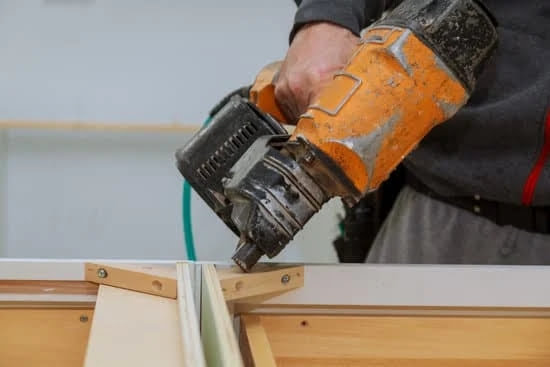Chisels have long been an essential tool in woodworking, allowing craftsmen to shape, carve, and create intricate details in wood. Whether you’re a beginner exploring the world of woodworking or a seasoned professional looking to expand your skills, understanding the basics of chisel woodworking is crucial. This introductory section will provide you with an overview of chisel woodworking, its significance in the craft, and the tools needed to get started.
Chisel woodworking involves using various types of chisels to remove excess wood or shape it into desired forms. From paring and routing to chopping and carving, chisels offer a great deal of versatility and precision in the hands of skilled craftsmen. By mastering chisel woodworking techniques, you can create beautiful furniture pieces, decorative items, or even intricate wooden sculptures.
Before delving into the techniques themselves, it is important to familiarize yourself with the different tools needed for chisel woodworking. A basic set typically includes bench chisels, mortise chisels, skew chisels, and corner chisels among others. Each type has its own unique application and purpose in woodworking tasks. By understanding their characteristics and selecting the appropriate chisel for each project, you can ensure successful results.
Choosing the Right Chisel
When engaging in chisel woodworking, selecting the appropriate chisel for your project is crucial to achieving successful and precise results. Different types of chisels are available, each designed for specific applications. In this section, we will explore the various types of chisels and discuss important factors to consider when choosing the right one for your woodworking needs.
Different Types of Chisels and their Applications
There are several types of chisels commonly used in woodworking, including bench chisels, mortise chisels, paring chisels, and gouges. Bench chisels are versatile tools suitable for a wide range of tasks such as chopping and paring. Mortise chisels have thicker blades and are specifically designed for cutting square holes or mortises. Paring chisels have longer blades that allow for more delicate work, while gouges are curved at the blade’s edge and ideal for carving and shaping wood.
Understanding the applications of each type of chisel will help you determine which one is best suited for your woodworking project. Depending on the desired outcome, you may need multiple types of chisels to accomplish different tasks effectively.
Factors to Consider When Choosing a Chisel
When selecting a chisel, there are several factors that should be taken into account:
- Blade Material: The type of steel used in the blade affects its durability and how well it holds an edge. High-carbon steel is commonly preferred due to its ability to maintain sharpness for extended periods.
- Blade Width: The width of the blade determines the amount of material you can remove with each pass. Consider the size of your project and choose a blade width accordingly.
- Handle Comfort: Since woodworking can be a time-consuming process, it’s essential to choose a chisel with a handle that provides comfort and control. Ergonomically designed handles with a secure grip can reduce fatigue and improve accuracy.
- Budget: Chisels come in a range of prices, and it’s important to consider your budget when making a purchase. While higher-end chisels may offer superior quality, there are also affordable options available for those starting out or on a limited budget.
By considering these factors, you can ensure that you choose the right chisel for your woodworking project, enabling you to work efficiently and achieve the desired results. Remember to properly maintain and sharpen your chisels regularly to prolong their lifespan and maintain optimal performance.
Mastering Chisel Handling
When it comes to chisel woodworking, one of the most crucial aspects is mastering chisel handling techniques in order to achieve optimal control and precision. Without proper control over your chisel, you may risk damaging your workpiece or even injuring yourself. In this section, we will explore some techniques that can greatly enhance your chisel woodworking skills.
First and foremost, it is essential to understand the importance of proper hand positioning and grip. The way you hold your chisel greatly affects your control over it. For most chisel woodworking tasks, a grip known as the “pencil grip” is recommended. This involves holding the handle of the chisel between your thumb and index finger, similar to how you would hold a pencil. This grip provides better accuracy and allows for a steady and controlled movement.
In addition to hand positioning, sharpening your chisels regularly is vital for optimum performance. Dull blades not only make it difficult to achieve clean cuts but can also cause accidents due to excessive force applied. To sharpen your chisels effectively, start by securing the blade in a honing guide or vice to keep it stable.
Use a sharpening stone or diamond plate with consistent back-and-forth motions along the beveled edge of the blade until you achieve a sharp edge. Regularly honing and maintaining the sharpness of your chisels will significantly improve their cutting ability and overall control during woodworking tasks.
By mastering proper hand positioning and grip as well as diligently sharpening your chisels, you can greatly enhance your control over these tools when performing various woodworking tasks. With practice, you will develop more confidence in using the appropriate amount of pressure needed for different cuts and achieve cleaner results in your projects.
Remember that becoming proficient with these techniques requires patience and dedication, so don’t be discouraged if it takes time to perfect them. With continued practice and honing of your skills, you will soon be able to achieve optimal control in your chisel woodworking endeavors.
Safety First
When engaging in chisel woodworking, prioritizing safety is crucial to ensure a successful and accident-free experience. By taking the necessary precautions and creating a safe working environment, you can significantly reduce the risk of injuries and accidents. Here are some essential safety measures to keep in mind:
- Wear Protective Gear: To protect yourself from potential harm, always wear appropriate protective gear such as safety glasses or goggles, gloves, and a dust mask or respirator. Safety glasses or goggles shield your eyes from flying debris or wood chips, while gloves provide protection against sharp edges and splinters. A dust mask or respirator helps filter out harmful dust particles that can be generated during woodworking.
- Maintain a Clean Workspace: Keeping your workspace clean and organized is vital for both safety and efficiency. Cluttered work areas increase the likelihood of tripping hazards, while sawdust accumulation poses a fire hazard. Regularly sweep up sawdust and debris from your workspace and properly dispose of them.
- Use Tools Mindfully: When handling chisels, it’s important to use them with caution to avoid accidents. Make sure your chisels are sharp and properly maintained to prevent them from slipping unexpectedly during use. Always position yourself in a way that allows you full control over the chisel’s movement, keeping your hands away from the blade’s path.
- Secure Your Workpiece: Properly securing your workpiece before starting any chiseling is critical for both precision and safety. Use clamps or a vise to secure the wood firmly in place so that it doesn’t slip or move while you’re working on it.
- Practice Safe Working Techniques: Adopting safe working techniques can greatly minimize the risk of accidents. Always cut away from yourself when using a chisel to prevent accidental self-inflicted injuries. Additionally, avoid exerting excessive force with your chisel, as this can lead to the tool slipping and causing injury. Instead, let the sharpness of the chisel do the work for you.
By following these safety precautions, you can create a safer environment for chisel woodworking and enjoy a worry-free experience. Remember that accidents can happen even with the utmost care, so always be vigilant and take breaks whenever needed. With safety as your top priority, you can fully immerse yourself in the craft of chisel woodworking while protecting yourself from potential harm.
Begin with the Basics
Chisel woodworking is a versatile and rewarding craft that allows beginners to create beautiful and functional pieces. Before diving into advanced techniques, it is important to start with the basics. This section will provide an introduction to basic woodworking techniques that can be executed using chisels.
One of the fundamental techniques in chisel woodworking is paring. Paring involves removing thin shavings of wood to shape and refine the surface of a workpiece. To execute this technique, hold the chisel with your dominant hand while guiding the blade with your non-dominant hand. Start by making shallow cuts and gradually deepen them until you achieve the desired shape or level of smoothness.
Routing is another essential technique that beginners should master. This technique involves creating grooves or channels in the wood using a chisel. Begin by marking out the area where you want to create the groove, then position your chisel at one end of the marked line and tap it gently with a mallet or hammer until it starts to cut into the wood. Gradually increase the depth of your cuts until you reach the desired depth of the groove.
Chopping is yet another foundational technique in chisel woodworking. It involves making precise vertical cuts into wood, allowing for shaping, joint creation, or separation of pieces. Hold the chisel firmly in one hand and use a mallet or hammer to strike it at its top edge, driving it vertically into the wood. Repeat this process as necessary to achieve your desired result.
By mastering these basic techniques, beginners can gain confidence in their chisel woodworking skills and lay a solid foundation for more advanced projects in their journey as craftspeople.
| Basic Technique | Description |
|---|---|
| Paring | Removing thin shavings of wood to shape and refine surfaces. |
| Routing | Creating grooves or channels in the wood. |
| Chopping | Making precise vertical cuts into wood. |
Advanced Chisel Woodworking Techniques
In the world of chisel woodworking, there are endless opportunities to push your creativity to new heights. Once you have mastered the basics and feel confident in your skills, it is time to explore more advanced techniques that will truly set your woodworking projects apart. This section will delve into intricate techniques such as dovetailing, carving, and inlaying, providing step-by-step demonstrations and guidance on how to master these advanced chisel woodworking techniques.
One of the most popular advanced techniques in chisel woodworking is dovetailing. Dovetail joints are known for their strength and beauty, making them a favorite among woodworkers. These joints create an interlocking bond between two pieces of wood without the need for additional fasteners like nails or screws. The precision required in creating dovetail joints makes them a challenging yet rewarding technique to master.
Carving is another advanced technique that allows woodworkers to create intricate designs and sculptural elements using chisels. With the right tools and techniques, you can transform a simple block of wood into a work of art. Whether you are interested in relief carving or sculptural carving, chisels play a vital role in shaping the wood with precision and control.
Inlaying is yet another advanced technique that adds a touch of elegance and sophistication to woodworking projects. By incorporating different materials such as metal or contrasting types of wood into your design, you can create stunning patterns and textures that make your work stand out. To achieve successful inlays, precise measurements and careful execution with chisels are crucial.
Overall, exploring advanced chisel woodworking techniques allows you to take your craftsmanship to new levels. By mastering techniques like dovetailing, carving, and inlaying, you can unleash your creativity and create projects that are truly unique and visually striking.
| Advanced Technique | Description |
|---|---|
| Dovetailing | Create interlocking joints for strong and beautiful connections between wood pieces. |
| Carving | Sculpt and shape wood to create intricate designs and sculptural elements. |
| Inlaying | Add contrasting materials to create stunning patterns and textures in your woodworking projects. |
Chisel Woodworking Project Ideas
Woodworking projects can range from simple and functional pieces to intricate and artistic creations. Chisels play a crucial role in bringing these projects to life, allowing woodworkers to shape and refine their designs. Whether you’re a beginner or an experienced woodworker, here are some project ideas that will inspire your next masterpiece.
Cutting Boards
One of the most popular woodworking projects for beginners is creating cutting boards. Not only are they practical, but they also offer plenty of room for personal creativity. Chisels can be used to carve unique patterns and designs into the surface of the board, giving it a customized touch. From geometric shapes to intricate motifs, there are endless possibilities for creating one-of-a-kind cutting boards.
Jewelry Boxes
For those looking to challenge their woodworking skills, making jewelry boxes is an excellent project idea. Chisels can be used to create precise mortise and tenon joints which provide strength and durability to the box’s structure. Additionally, chiseling decorative details such as carved lids or intricate inlays will elevate the overall aesthetic appeal of the jewelry box.
Chairs
Building chairs requires a combination of precision and craftsmanship, making it an ideal project for intermediate or advanced woodworkers. Chisels are essential for shaping elements such as armrests, legs, and spindles. They can also be used for decorative carving on the chair’s backrest or seat surface. The versatility of chisels allows woodworkers to create unique and comfortable chairs that will be cherished for years to come.
Picture Frames
Picture frames not only display cherished memories but also provide an opportunity for creativity through woodworking. With chisels, you can add intricate details such as ornamental carvings or embossed patterns onto the frame. Using chisels to create precise miter joints will ensure a seamless and professional finish. With different wood species and finishes, you can easily customize picture frames to match any style or decor.
Sculptures
For those with advanced woodworking skills and a desire for artistic expression, creating wooden sculptures using chisels can be an extraordinary endeavor. The ability to shape and carve wood with precision allows for the creation of intricate and visually captivating sculptures. From abstract designs to lifelike figurines, the possibilities are endless when it comes to sculpting wood with chisels.
These project ideas serve as a starting point for your next chisel woodworking masterpiece. Remember to start with projects that suit your skill level, gradually working your way towards more intricate designs. With practice and dedication, you’ll uncover the true potential of chisel woodworking and discover your own creative flair. So grab your chisels, choose a project that inspires you, and let your imagination guide you in transforming raw wood into a work of art.
Troubleshooting Common Challenges
Chisel woodworking, like any craft, can present its fair share of challenges. However, with the right troubleshooting techniques, you can overcome these obstacles and continue creating beautiful masterpieces. In this section, we will explore some common challenges that woodworkers may encounter during chisel woodworking and provide tips on how to overcome them.
One common challenge in chisel woodworking is achieving clean and precise cuts. Sometimes, the chisel may not cut smoothly or leave behind a rough surface. To tackle this issue, ensure that your chisels are sharp and properly maintained. Dull or damaged chisels can cause tearing or splintering of the wood.
Regularly sharpen your chisels using a sharpening stone or honing guide to maintain their cutting edge. Additionally, make sure to use the appropriate sized chisel for the task at hand. Using a narrower or wider chisel than what is required can result in imprecise cuts.
Another challenge that woodworkers often face is preventing the wood from splitting or cracking while working with a chisel. To avoid this, it is crucial to pay attention to the grain direction of the wood before making any cuts. Always work in line with the grain to reduce the risk of splitting. If necessary, you can also make relief cuts to relieve stress on the wood and prevent cracks from forming.
Additionally, accuracy and control are essential when using a chisel. It can be challenging to maintain consistent control over your strikes or maintain steady pressure on the chisel while performing intricate tasks such as carving or routing. One way to improve control is by adopting the proper hand positioning and grip for optimal precision. Hold the handle firmly with one hand while stabilizing near the blade with your other hand for better control.
By troubleshooting these common challenges and implementing these tips into your practice, you can create high-quality woodworking projects with ease. Remember that practice makes perfect in mastering chisel woodworking techniques, so don’t get discouraged if you encounter difficulties along the way. Stay patient, keep refining your skills, and soon you’ll be able to overcome any obstacle that comes your way in the world of chisel woodworking.
Conclusion
In conclusion, mastering the art of chisel woodworking requires a combination of knowledge, practice, and patience. Through this article, we have explored the basics of chisel woodworking and learned about the tools needed for success. We have also discussed the importance of choosing the right chisel for each project and mastering proper handling techniques for optimal control.
Additionally, we have emphasized the importance of safety measures and precautions to avoid accidents while working with chisels. It is crucial to be mindful of wearing protective gear and maintaining a clean workspace. By following these safety guidelines, woodworkers can ensure a safer and more enjoyable experience in their craft.
Furthermore, we have covered both beginner and advanced techniques in chisel woodworking, providing detailed instructions and step-by-step demonstrations. From basic paring and routing to intricate carving and inlaying, there are endless possibilities for creativity with chisels. The showcased woodworking projects offer inspiration for woodworkers at different skill levels and interests.
As with any skill, mastery in chisel woodworking takes time and practice. It is important to remain dedicated, patient, and persistent on your journey to honing your skills. Remember to not be discouraged by challenges or mistakes along the way but rather use them as opportunities for growth. By embracing the versatility of chisel woodworking, you will unlock a world of creativity that can result in stunning masterpieces.
Frequently Asked Questions
What is the proper way to use a wood chisel?
The proper way to use a wood chisel starts with selecting the appropriate size and shape of chisel for the task at hand. It is important to maintain a sharp edge on the chisel by regularly honing or sharpening it. When using a wood chisel, it is crucial to secure the workpiece firmly in place, either by clamping it down or using a vise. Begin by making a shallow cut into the wood, aligning the blade along the desired cutting line.
Gradually increase the depth of each cut, prudently applying pressure with your dominant hand while firmly gripping the handle with your other hand. To ensure accuracy and safety, keep your non-dominant hand away from the cutting area. Take your time and make successive cuts until you achieve the desired result.
How do you chisel wood for beginners?
Chiseling wood as a beginner requires patience, practice, and attention to safety. Start by selecting an appropriate size and shape of chisel that suits your project. Invest in quality tools that are comfortable to hold and maneuver. Before making any cuts, take time to familiarize yourself with correct hand positioning and avoid placing fingers or hands in front of the chisel’s path.
Secure your workpiece properly with clamps or a vise to prevent movement during carving. Be mindful of grain direction; always work parallel to it to avoid splintering or unwanted damage to the wood fibers. Practice light cuts initially, gradually increasing pressure as you gain confidence in controlling the tool. Remember that mistakes can happen, so don’t rush through your carving process; take breaks when needed and enjoy learning through experimentation.
How do you carve wood with a chisel?
Carving wood with a chisel involves several key techniques that can help achieve accurate results. Begin by marking out your design on the wooden surface using a pencil or fine-cutting knife for guidance throughout carving process. Starting with shallow vertical cuts, define outlines and contours before proceeding further into detailing and shaping areas. Vary the width and angle of cuts to remove more substantial material and create different textures or patterns.
It is crucial to change your grip on the chisel when needed, adjusting between a light fingertip hold for delicate work and tightly gripping the handle for greater control during heavier cuts. To prevent damage or splitting wood, take care not to exert excessive force or use dull tools that require additional pressure. Regularly stop and assess your progress, adjusting your approach as necessary to achieve the desired result.

Hi everyone! I’m a woodworker and blogger, and this is my woodworking blog. In my blog, I share tips and tricks for woodworkers of all skill levels, as well as project ideas that you can try yourself.





